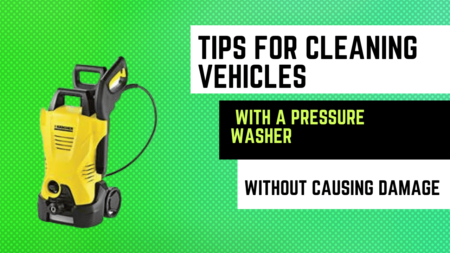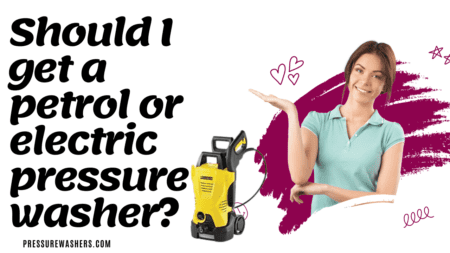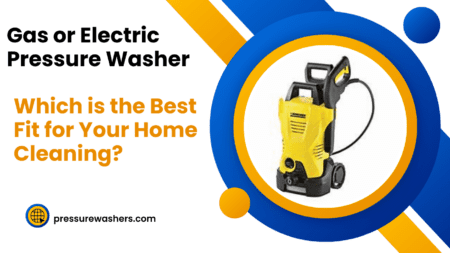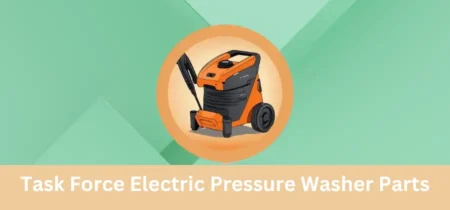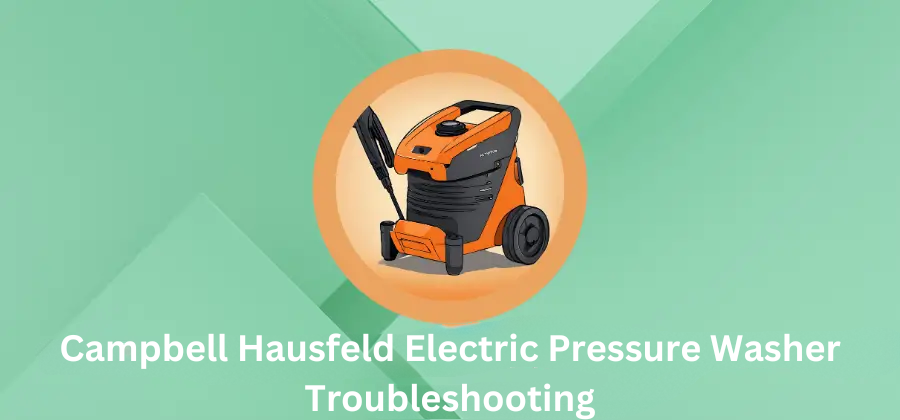
Campbell Hausfeld is a well-known manufacturer of quality pressure washers for various cleaning applications. Pressure washers are powerful machines that use water at high pressure to remove dirt, grime, mold, and stains from different surfaces. They can save time, water, and energy compared to conventional cleaning methods.
- Problem 1: Pressure Washer Won’t Start up When Turned on
- Problem 2: Pump Doesn’t Reach the Necessary Pressure to Work Properly
- Problem 3: Pressure Fluctuates or Pulsates
- Problem 4: No detergent suction
- Problem 5: Water or Oil Leaks From the Unit
- Problem 6: Engine or motor turns off while in use
- Problem 7: Premature seal failure
- Conclusion
Key Takeaways:
- Diagnose symptoms and causes to troubleshoot common electric pressure washer problems
- Issues include no power, insufficient pressure, fluctuations, no detergent, leaks, unexpected shutdowns, seal wear
- Solutions involve replacing damaged parts, cleaning clogged parts, adjusting nozzles, releasing pressure, allowing cooling, using right detergent, checking fluid levels
- Follow troubleshooting to improve performance, efficiency, lifespan
- Use proper maintenance procedures for water, detergents, run times, storage etc.
- Complex issues require qualified technician
However, like any other machine, Campbell Hausfeld electric pressure washers can encounter some problems that affect their performance or operation. In this article, we will troubleshoot some of the common problems with Campbell Hausfeld electric pressure washers and provide solutions to fix them.
Problem 1: Pressure Washer Won’t Start up When Turned on
Symptoms: The pressure washer does not respond when the power switch is turned on. There is no sound or movement from the unit.
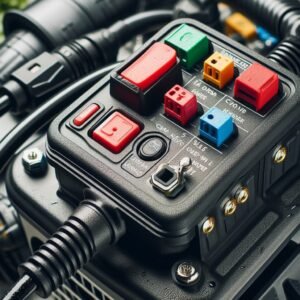
Possible causes: The most likely cause of this problem is a faulty plug, socket, fuse, or circuit breaker. The plug or socket may be damaged, loose, or not connected properly. The fuse may be blown or the circuit breaker may be tripped due to a power surge or overload.
Solutions: To solve this problem, you should inspect and replace the plug, socket, fuse, or circuit breaker if necessary. Make sure the plug and socket are firmly connected and in good condition. Check the fuse box or the circuit breaker panel and replace the fuse or reset the breaker if needed. If the problem persists, you may have a defective power cord or switch that needs to be replaced by a professional.
Problem 2: Pump Doesn’t Reach the Necessary Pressure to Work Properly
Symptoms: The pressure washer produces low or no water pressure. The water flow is weak or inconsistent. The cleaning performance is poor or ineffective.
Possible causes: There are several possible causes of this problem, such as a pressurized unit, a low main supply voltage, a clogged water filter, nozzle, or unloader, air in the pump or hose connections, or a wrong or worn out nozzle size.
Solutions: To solve this problem, you should release the pressure by squeezing the trigger or press the reset button on the unit. Make sure the main supply voltage is sufficient and stable. Clean the water filter, nozzle, or unloader with water or a tip cleaner to remove any dirt or debris. Tighten the connections and locking ring or call for service if there is air in the pump or hose connections. Use the correct or new nozzle size for the desired pressure and spray pattern.
Problem 3: Pressure Fluctuates or Pulsates
Symptoms: The pressure washer produces uneven or intermittent water pressure. The water flow is not steady or smooth. The cleaning performance is erratic or unstable.
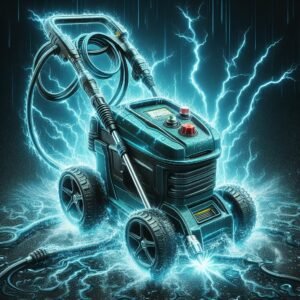
Possible causes: The possible causes of this problem are similar to the previous one, such as a clogged water filter, nozzle, or unloader, air in the pump or hose connections, or a wrong or worn out nozzle size. Additionally, a long or small extension cord may also cause this problem by reducing the power supply to the unit.
Solutions: To solve this problem, you should follow the same steps as the previous one, such as cleaning the water filter, nozzle, or unloader, tightening the connections and locking ring, or using the correct or new nozzle size. Moreover, you should remove the extension cord or use a shorter or larger one that meets the specifications of the unit.
Problem 4: No detergent suction
Symptoms: The pressure washer does not draw or mix detergent with water. The detergent tank is full but the detergent does not come out of the nozzle. The cleaning performance is not enhanced by the detergent.
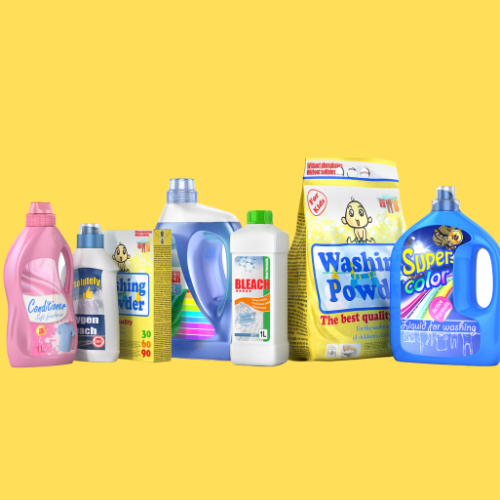
Possible causes: The possible causes of this problem are a low pressure position of the lance nozzle, a clogged detergent filter or injector, or a wrong type or amount of detergent.
Solutions: To solve this problem, you should slide the lance nozzle up into the high pressure position. This will allow the detergent to be sucked into the water stream. You should also clean the detergent filter or injector with water or a needle to remove any blockage. Furthermore, you should use the right type and amount of detergent that is compatible with the unit and the cleaning task.
Problem 5: Water or Oil Leaks From the Unit
Symptoms: The pressure washer leaks water or oil from the hoses, fittings, or seals. The water or oil drips or sprays from the unit. The unit loses pressure or power due to the leakage.
Possible causes: The possible causes of this problem are damaged or loose hoses, fittings, or seals. The hoses, fittings, or seals may be cracked, worn out, or not tightened properly. The leakage may also be caused by high water temperature or pressure, or low oil level or quality.
Solutions: To solve this problem, you should replace or tighten the hoses, fittings, or seals if they are damaged or loose. You should also check the water temperature and pressure and make sure they are within the limits of the unit. Moreover, you should check the oil level and quality and refill or change the oil if needed.
Problem 6: Engine or motor turns off while in use
Symptoms: The pressure washer stops working while in use. The engine or motor shuts off suddenly or gradually. The unit does not restart or runs poorly after restarting.
Possible causes: The possible causes of this problem are a tripped thermal safety switch or GFCI, an overloaded, overheated, or damaged motor or engine, or improper use or maintenance of the unit.
Solutions: To solve this problem, you should turn off the unit and allow the motor or engine to cool down or check the GFCI and reset it if necessary. You should also avoid overloading or overheating the unit by using it for prolonged periods or in hot weather. Furthermore, you should follow the user manual instructions for proper use and maintenance of the unit, such as changing the oil, cleaning the air filter, and storing the unit properly.
Problem 7: Premature seal failure
Symptoms: The pressure washer seals wear out or break down prematurely. The seals lose their elasticity or integrity. The unit leaks water or oil due to the seal failure.
Possible causes: The possible causes of this problem are improper use or maintenance of the unit, such as running the unit dry, using hot water, or leaving the unit under pressure when not in use. The seal failure may also be caused by poor water quality, such as hard water, or abrasive or corrosive detergents.
Solutions: To solve this problem, you should follow the user manual instructions for proper use and maintenance of the unit, such as using clean water, avoiding hot water, and releasing the pressure when not in use. You should also use soft water or a water softener if the water is hard, or use mild or neutral detergents that are suitable for the unit and the cleaning task.
Conclusion
In this article, we have troubleshooted some of the common problems with Campbell Hausfeld electric pressure washers and provided solutions to fix them. By following these steps, you can improve the performance and operation of your pressure washer and extend its lifespan. However, if the problem is beyond your ability or knowledge, you should always contact a qualified service technician for assistance.
We hope you have found this article helpful and informative. If you have any questions or comments, please feel free to contact us. Thank you for choosing Campbell Hausfeld electric pressure washers for your cleaning needs. Happy cleaning!
